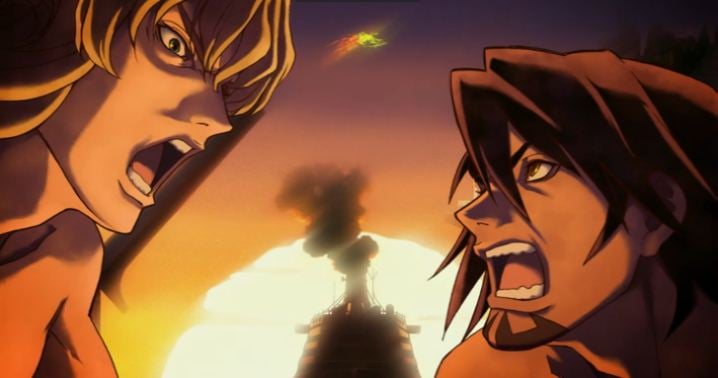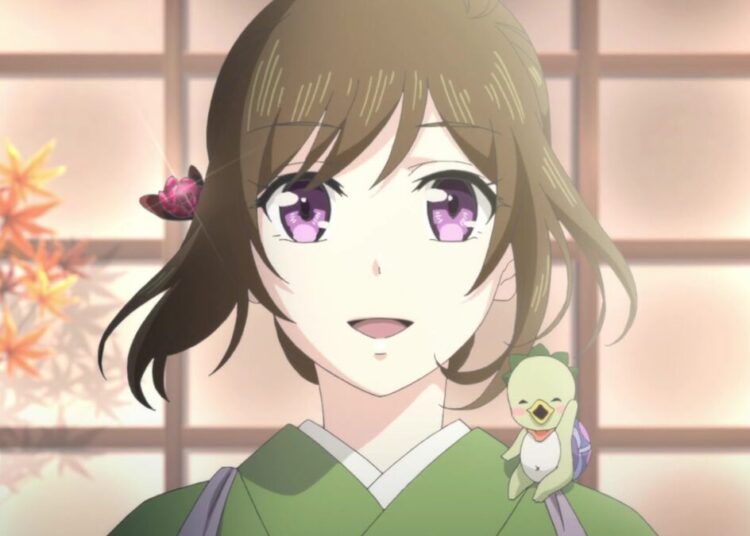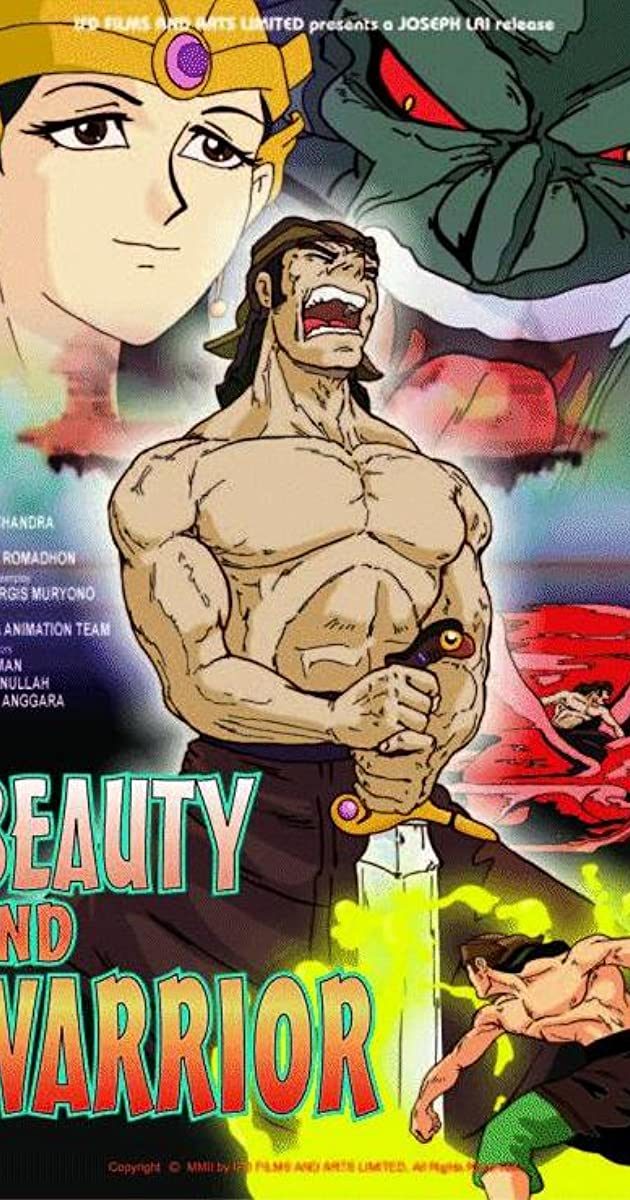
To say that foreign attempts at capturing the spirit of Japanese manga and anime have been varied would be an understatement. For every resounding success, as seen in more than a few French series, you have something like Bolivar el Héroe or Dragon Ball Evolution. And then, there’s the likes of Beauty and Warrior (Dewi Mayang Sari; 2002): a farce that has to be seen to be believed. Though even after several views, it’s an incomprehensible mess that’s as baffling as it is incompetent.
This 41-minute romp was ostensibly produced by Indonesian company Emperor Edutainment (Unggul Cipta Piranti). Very little information, however, is available regarding the actual creators, Wissta Animation Film, with the work itself being the only known directorial stint of one Sukma Romadhon. That it was localized and produced in 2002 in IFD Films and Arts Ltd., doesn’t inspire much confidence, either. Not when the Hong Kong-based company’s founded by Joseph Lai and Godfrey Ho, whose ninja exploitation films have become the stuff of online infamy.
Digital rip of the film’s trailer, which not only fails as a convincing promotion but also uses a different voice track from the actual work. Circa 2008. (Source: YouTube)
Given that the entire work’s available on YouTube, it wouldn’t take long to see why it’s gained a certain notoriety.
Folklore, Obscured
From what could be gleaned, Beauty and Warrior is based on an Indonesian legend. On a mysterious realm called Mataram (based on Java), Princess Sari (Ivone Rose) summons two warrior brothers (voiced by Ferry Fadly and M. Aboed) to guard the Water Palace. They meditate and confront various trials, including combat against her minions, to prove their worth. One of them, Batara, triumphs and not only falls in love with the mystical woman but also is entrusted with the sword contained within the Palace. His brother, Mega, however, grows jealous and seeks the power of that weapon. What ensues is a fight between siblings over love and destiny.
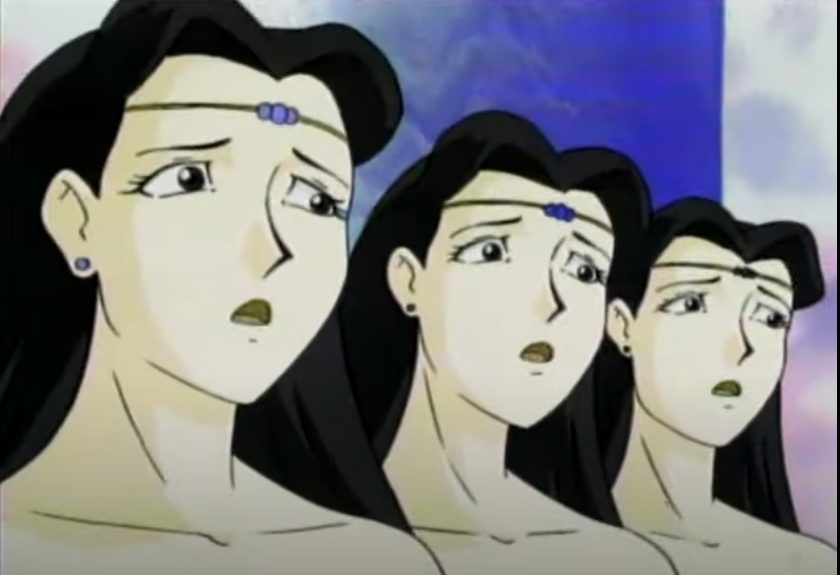
That, however, is as clear as it ever gets. Even with the IMDb summary in mind, you may be hard-pressed to make heads or tails with what’s on-screen. The first 10 minutes alone largely involve the princess’ family and her subsequent banishment, which have zero bearing with the rest of the film, and with no explanation or connection to boot. Don’t expect the plot holes and inconsistencies to let up as the story proper gets into motion. Whether it’s the brothers undertaking the quest only for Batara to later wonder what’s going on, how ridiculously quick the romance between him and Sari is (such that he fathers a child while in astral form), or how motivations change on the fly, any semblance of sense and pacing is nonexistent.
It’s not as though the presentation compensates for this. The dubbing provided by IFD Films and Arts Ltd., for one, is atrocious to put it lightly. The half-baked line delivery not matching the characters’ emotions, as well as the stilted performances by unknown voice actors with a questionable grasp of English, further add to the nonsensical madness. That the localization butchers the Javanese source material to being nigh incomprehensible, with the summary provided on the DVD cover mentioning a Green Knight and King William, don’t help matters. Combined with droning music that tries poorly to be ethereal, the ineptitude is blatant that it’s laughable.
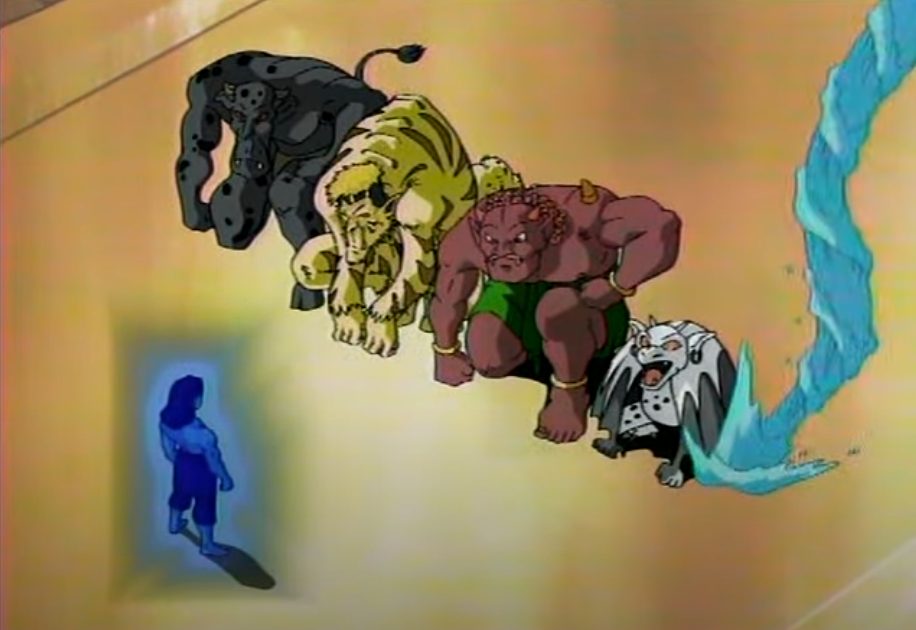
The only real bright spot, apart from the unintentional hilarity, would be the art style. You could tell that some effort was made to not just capture the feel of ‘80s and ‘90s style anime, but also translate that into the context of local folklore, especially in the main characters. There’s even a glimmer of competence in the climactic battle between the brothers, with a few seconds of martial arts combat that’s more fluid than much of the entire runtime. Unfortunately, there’s a glaring tendency for the humanoid cast to look near-identical to one another, making it hard for instance to tell Sari apart from her sister, or for that matter Batara and Mega apart from their bandanas. Then, there’s the actual animation, be it in the choppy looping sequences, abrupt transitions, or how cheap the effects look in general (such as the camera zooming into a still frame to convey shock).
All in all, this movie does neither its Japanese nor Indonesian inspirations any justice.
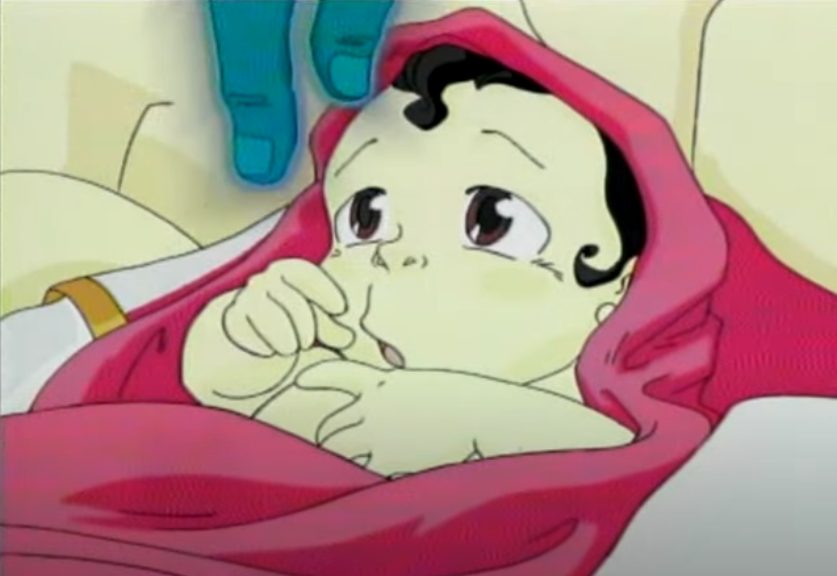
Historical Infamy
From the anime’s quality and Emperor Edutainment’s portfolio, it’s clear a low-budget affair made under circumstances that, by Japanese or Western standards, would be seen as questionable. Even with those in mind, however, and however admirable the animators’ intentions may have been, it’s also evident that this direct-to-video schlock would have easily ended up forgotten in some bargain bin in Jakarta.
You might be asking yourself, then: “Why was this localized?” The answer may never be fully known, but it wouldn’t take much effort to make a reasonable guess, given IFD’s involvement. Godfrey Ho and Joseph Lai’s business also had a track record of publishing and localizing various animated films from across Asia in bulk for English-speaking audiences. As with the aforementioned ninja movies, however, just about every single one of those became notorious for their cheap production values, cut-and-paste editing and overall shoddy execution. Thus, especially when put alongside infamous schlock like Space Thunder Kids (1991), which was crappily spliced together from myriad South Korean anime, and the original yet slipshod Ali Baba and the Gold Raiders (2002), Beauty and Warrior stands out in the worst way possible.
In the years following the film being posted on YouTube, it became the subject for reviews and MST3K-Esque parodies. Even to this day, it remains as fodder for ridicule. Circa 2012. (Source: YouTube)
Whether by sheer chance or due to a producer looking to grab a quick buck, it’s unsurprising that this film has gone down in infamy for the wider world to see. That it was uploaded on 2007 as “The Worst Anime Ever” has not only made it one of the more notorious videos from early YouTube, or the subject of a number of online reviews. By this point, it’s all but guaranteed to be a legend in its own right. Just not the kind one would take pride in.


